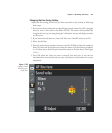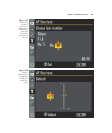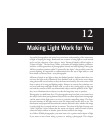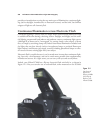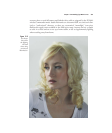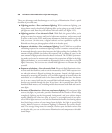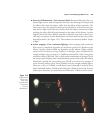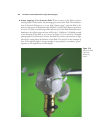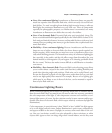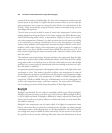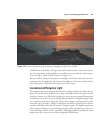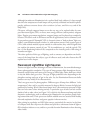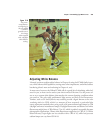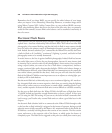
■ Evenness of illumination—Con: electronic flash. Electronic flash units, like con-
tinuous light sources such as lamps that don’t have the advantage of being located
93 million miles from the subject, suffer from the effects of their proximity. The
inverse square law, first applied to both gravity and light by Sir Isaac Newton, dic-
tates that as a light source’s distance increases from the subject, the amount of light
reaching the subject falls off proportionately to the square of the distance. In plain
English, that means that a flash or lamp that’s eight feet away from a subject pro-
vides only one-quarter as much illumination as a source that’s four feet away (rather
than half as much). (See Figure 12.3.) This translates into relatively shallow “depth-
of-light.”
■ Action stopping—Con: continuous lighting. Action stopping with continuous
light sources is completely dependent on the shutter speed you’ve dialed in on the
camera. And the speeds available are dependent on the amount of light available
and your ISO sensitivity setting. Outdoors in daylight, there will probably be
enough sunlight to let you shoot at 1/2,000th second and f/6.3 with a non-grainy
sensitivity setting of ISO 400. That’s a fairly useful combination of settings if you’re
not using a super-telephoto with a small maximum aperture. But inside, the reduced
illumination quickly has you pushing your D7000 to its limits. For example, if
you’re shooting indoor sports, there probably won’t be enough available light to
allow you to use a 1/2,000th second shutter speed (although I routinely shoot
indoor basketball with my D7000 at ISO 1600 and 1/500th second at f/4). In many
indoor sports situations, you may find yourself limited to 1/500th second or slower.
Chapter 12 ■ Making Light Work for You 399
Figure 12.3
A light source
that is twice
as far away
provides only
one-quarter
as much
illumination.



